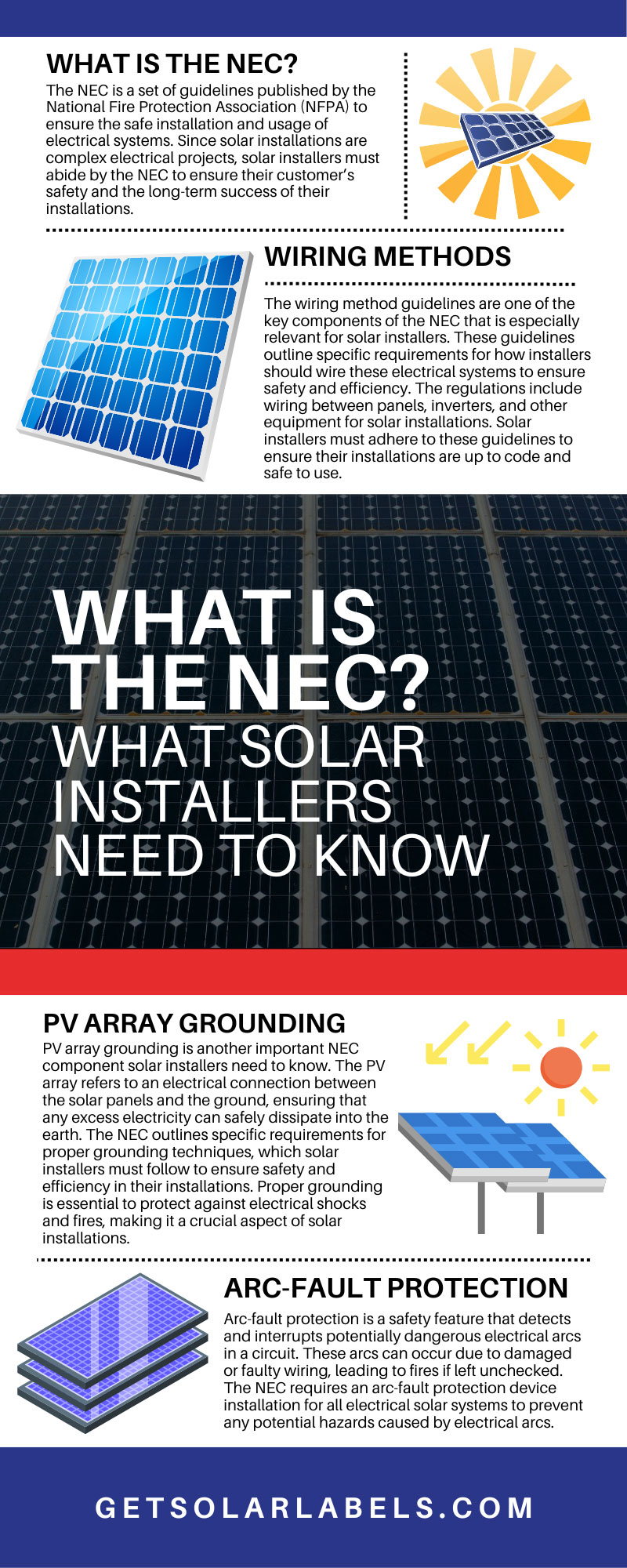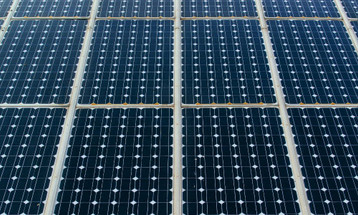Dec 25th 2023
What Is the NEC? What Solar Installers Need To Know
As the demand for solar energy continues to grow, solar installers must stay informed and updated about important regulations and codes. One such regulation is the National Electrical Code (NEC). Below, we’ll explain what the NEC is and what solar installers need to know to stay up to code.
What Is the NEC?
The NEC is a set of guidelines published by the National Fire Protection Association (NFPA) to ensure the safe installation and usage of electrical systems. Since solar installations are complex electrical projects, solar installers must abide by the NEC to ensure their customer’s safety and the long-term success of their installations.
Overview of the NEC and Its Importance in Solar Installation
The NFPA updates the NEC every three years to reflect changes and advancements in the electrical industry. Solar installers must stay current with these updates as they can impact the design, installation, and maintenance of these systems. The NEC covers various topics, including grounding, wiring methods, and equipment specifications. It also includes specific guidelines for renewable energy systems such as solar installations.
Key Components of the NEC Relevant for Solar Installers
While not every aspect of the NEC is relevant to solar panels, solar installers must pay particular attention to many areas and sections. We’ll briefly touch on these important subjects below.
Wiring Methods
The wiring method guidelines are one of the key components of the NEC that is especially relevant for solar installers. These guidelines outline specific requirements for how installers should wire these electrical systems to ensure safety and efficiency. The regulations include wiring between panels, inverters, and other equipment for solar installations. Solar installers must adhere to these guidelines to ensure their installations are up to code and safe to use. Following these guidelines can also prevent any future maintenance issues or safety hazards.
PV Array Grounding
PV array grounding is another important NEC component solar installers need to know. The PV array refers to an electrical connection between the solar panels and the ground, ensuring that any excess electricity can safely dissipate into the earth. The NEC outlines specific requirements for proper grounding techniques, which solar installers must follow to ensure safety and efficiency in their installations. Proper grounding is essential to protect against electrical shocks and fires, making it a crucial aspect of solar installations.
Arc-Fault Protection
Arc-fault protection is a safety feature that detects and interrupts potentially dangerous electrical arcs in a circuit. These arcs can occur due to damaged or faulty wiring, leading to fires if left unchecked. The NEC requires an arc-fault protection device installation for all electrical solar systems to prevent any potential hazards caused by electrical arcs.
Ground Fault Circuit Interrupter Protection
Ground Fault Circuit Interrupter (GFCI) protection is another important component of the NEC that solar installers must be familiar with. GFCIs detect imbalances in electrical currents and quickly shut off power to prevent shocks and electrocution. Solar system installers typically include GFCIs in outlets or receptacles with a higher risk of electric shock, such as in wet or outdoor areas.
Branch Circuit Protection
Branch circuit protection protects and regulates individual circuits within an electrical system. The NEC provides guidelines for properly sizing and installing branch circuit breakers or fuses, ensuring that each circuit receives adequate protection from overloading or short circuits. Proper branch circuit protection ensures a safe solar system installation and prevents potential equipment damage and power outages.
Exposed Metal Parts and Bonding
Exposed metal parts refer to any metallic components or surfaces that could encounter electrical currents in a solar installation. The NEC requires solar system installers to bond all exposed metal parts using specific grounding techniques to prevent potential shocks or electrocution. This bond creates an equal electrical current between all metal components, reducing the risk of shock.
Weatherproof Enclosures for Exposed Electrical Wiring
As solar system installations are often exposed to the elements, it’s essential that installers properly protect all electrical wiring from all weather conditions. The NEC specifies using weatherproof enclosures for any exposed electrical wiring to prevent damage and ensure safety. These enclosures must also adhere to specific guidelines to ensure proper protection.
Labeling Components Properly
Proper labeling of electrical components is necessary for the safety and maintenance of a solar installation. The NEC requires installers to clearly label all components and include the voltage ratings, warning signs, and identification numbers for each circuit. These labeling requirements help solar installers and maintenance workers easily identify and troubleshoot any installation issues.
Local Regulations That Could Affect Solar Installations
Solar installers must be aware of local regulations that could affect their installation process in addition to the NEC. These regulations may include building codes, zoning laws, and utility requirements. Solar installers must research and understand these regulations to ensure their installations meet all requirements.
What Training Is Needed for Solar Installers?
Relevant training, such as certification from the North American Board of Certified Energy Practitioners (NABCEP), can provide invaluable knowledge and skills.
How To Stay Up to Date on NEC Changes
As we’ve discussed above, what solar installers need to know about the NEC changes frequently, so it’s paramount that solar installers keep up with any changes to regulations or requirements. Solar installers can attend industry conferences and workshops, read industry publications, and regularly check for updates from the NFPA to stay updated with the changing regulations and codes. It’s also helpful to network with other electrical solar system professionals to stay informed about any changes or best practices in the industry.
Resources for Understanding and Complying With the NEC
The NEC can be difficult to read and understand for many, but resources are available that can help users parse out the text’s language and terminology. The NFPA website provides a wealth of resources for solar installers to understand and comply with the NEC, including the complete code text, training and certification opportunities, and helpful articles and guides. The NABCEP also offers training and certifications specifically focused on electrical solar system installations.
Conclusion: Where To Find NEC-Compliant Solar Labels
Get Solar Labels is the perfect solution if you’re a solar installer looking for reliable, NEC-compliant solar labels! Understanding and adhering to the NEC is crucial for the safety and success of solar installations, and our high-quality labels make it easy to comply with all necessary requirements. Browse our selection today and ensure your solar installations are up to code!


